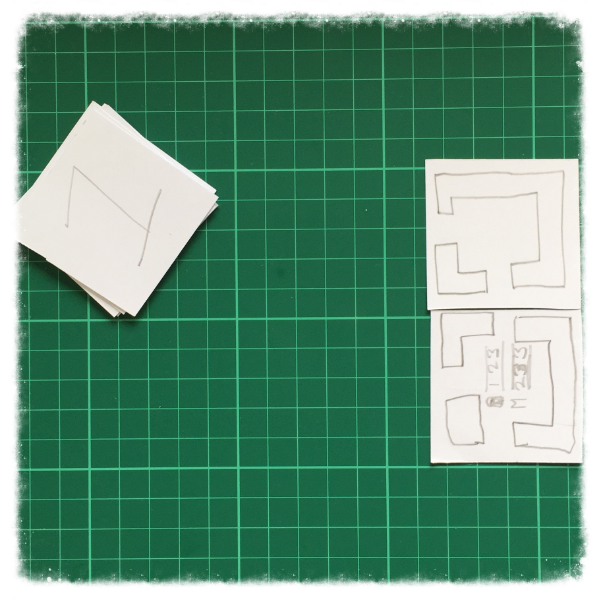Arcana Delve works by randomly producing a dungeon as you travel from room to room. The players start in one room, decide to go north and then take the tile from the top of the “level 1” deck. They place it on the board, joining up the doors with the northern door, and then they can see what’s waiting for them in the room. They continue like this until they’re run out of tiles. Players of Carcassone will be familiar with this style of map building.
This leads to a unique game every time. Specific tiles could have events baked into them: “there is a trap in this room!”, “there’s a mysterious well in this room”. So, having more tiles is a good thing. It increases randomness and the element of “I really need the next room to be the one with the healing potions in it!”

The problem I’ll come across here is that there are three levels of dungeon (that’s an arbitrary number, but it will definitely be above one). That means there will be three sets of tiles, each three or four millimetres high. You end up with quite a heft box.
One option is just to have a large amount of non-level specific tiles, but that doesn’t work with my current idea of having the difficulty specified on the tile itself. A tile that shows up on level 3 should be harder than on the first level.
The solution I’m going to try out first is ditching the idea of a stack of tiles, where you pick from the top. Instead, the tiles are in a bag, and you can select one blindly. You may have played Carcassonne like this. When selecting a card blindly, it means I can use both sides of the tile. A different room on both sides.
This means I can have a large number of room options, on far fewer tiles. It gives an added aspect to the game too; should you put down the side with more monsters and try for their treasure, or should you choose the other safer side? Your players around you will be egging you on to take the risk, but are you brave enough?